My part of the world saw a cold spring and a wet summer. The winter provided lengthy hard frosts which eventually killed off my artichokes before their first productive year. So there were a number of challenges that I hadn’t faced before when managing a productive green space.
The cold wet spring affected my mental health as well as ability to start seedlings. I struggle with lack of sunlight in the darker months and poor weather prevents me taking daily walks which helps me maintain my mood and executive function. I also only have one windowsill in my home to start seeds and a little lean-to mini greenhouse which makes starting plants complicated.
I quickly decided to focus my energies this year into DIY and structuring the plot with more beds and resources. Even though they would usually be thought of as a staple I decided not to grow any beans as I ran out of time and space. Giving myself permission to grow a smaller selection of crops gave me peace of mind and ability to focus on these other DIY elements that were less bound by strict calendar dates. I had the space to make progress and wasn’t setting myself up to fail.
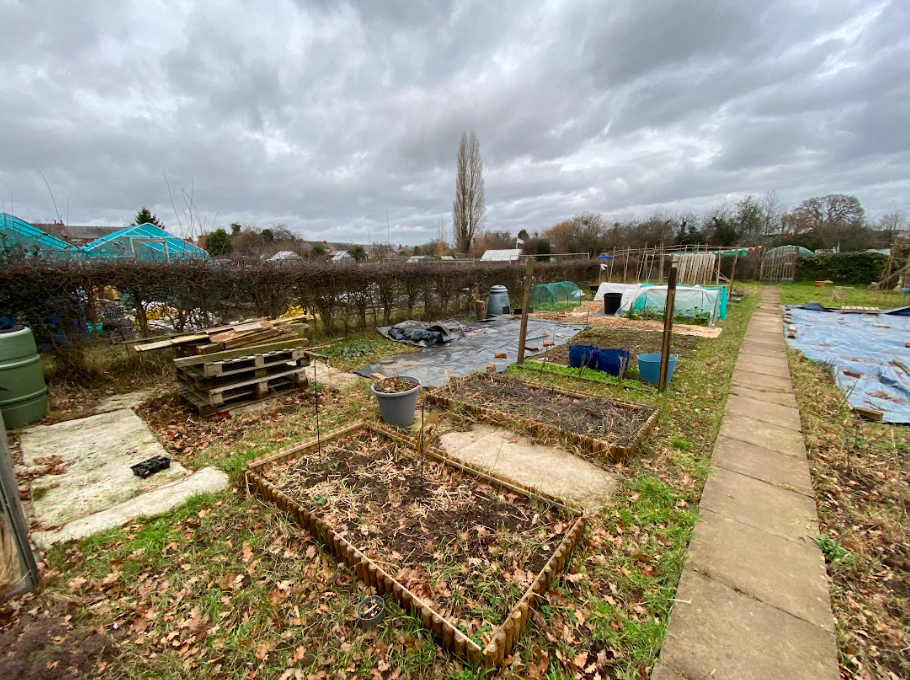
I spent February and March clearing and digging space to construct a new greenhouse. Over the course of a year I hadn’t found any listings for free or cheap glass greenhouses so I started looking for a polycarbonate alternative. I ended up finding one that fit my budget. In an ideal world a polytunnel would be cheaper and easier to build and maintain, however my experience of mini polytunnels being torn apart by badgers taught me that wasn’t going to be a good option.
I cleared the heavy ground of any remains of couch grass (weakened by being covered for the best part of a year). I then levelled the ground as best I could and built a wooden base built from pressure treated 2x4s.
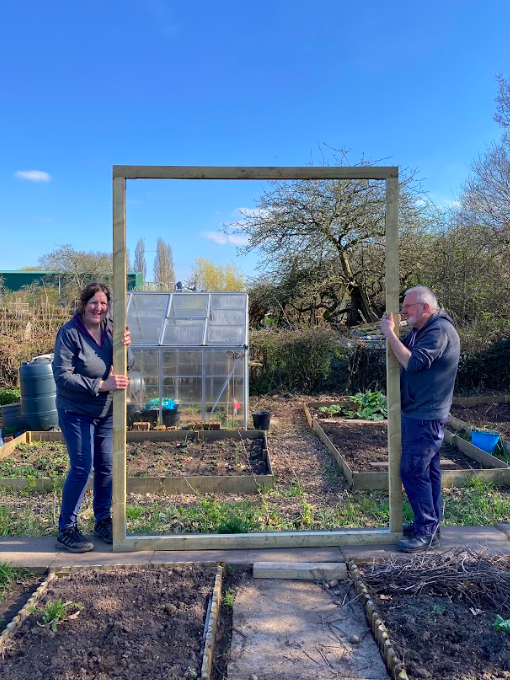
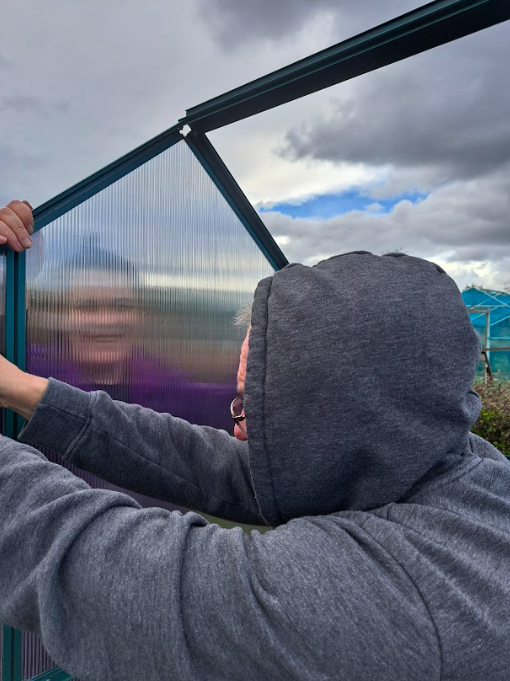
In early April my parents helped me move the base to its final position and start building the greenhouse. We had changeable weather, and on day 2 of building we were hit by windy conditions that made wrestling plastic panels challenging. I did burst into tears when the roof beam swung loose and hit me in the head but I otherwise held it together… And we made it! Including two inbuilt raised beds and two windows for cross ventilation. I’ve then fitted guttering and two second-hand waterbutts for water storage (black squares on the map lower down).
Either side of building the greenhouse I spent time rebuilding beds which had been recolonised by large amounts of couch grass. I also built a new 2x3m bed to the front of the new greenhouse. This year I dug somewhere in total of 40-50m2 of ground. The beds are still lacking in loam from previous tenants depleting the ground, and the earth I haven’t previously worked is very compacted. So it’s hard work!
I’ve been salvaging wood for free, storing it carefully, and then following a run of good weather paint it to protect it. I then make 30cm wide boards by fixing lengths together with 25x38mm batons. Paint again and then position to make raised edges to my beds. I’m then systematically digging out the couch grass between beds and making deep wood chip paths to help prevent couch grass growing back and provide safe non-slip paths to walk on in winter months. Local tree surgeons bring logs and chips regularly to the site so they’re free and easy for me to get.
This method to building beds has been working well for me. Just digging over the ground to aerate it increases the depth to accommodate the 30cm height, plus compost. Next year I’m planning to expand my experiment to dig out remaining sections of couch grass and reseeding the ground with white clover. White clover is a short variety that provides pollinators with food and (on my test strips) grows vigorously enough to out compete remaining couch grass.
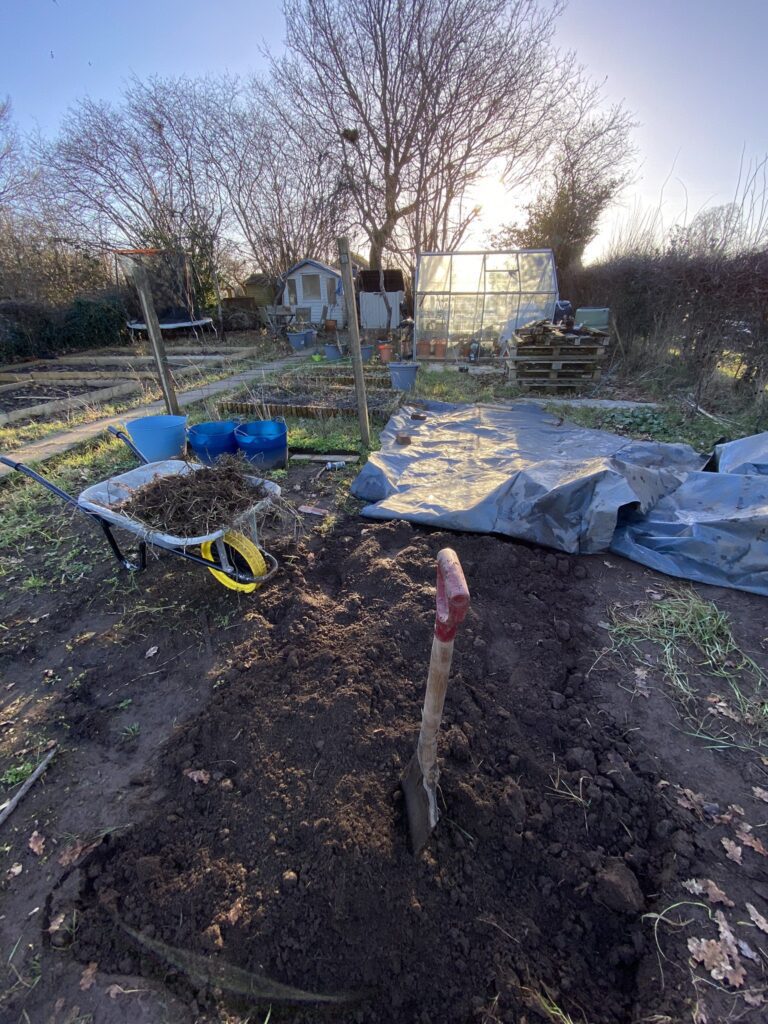
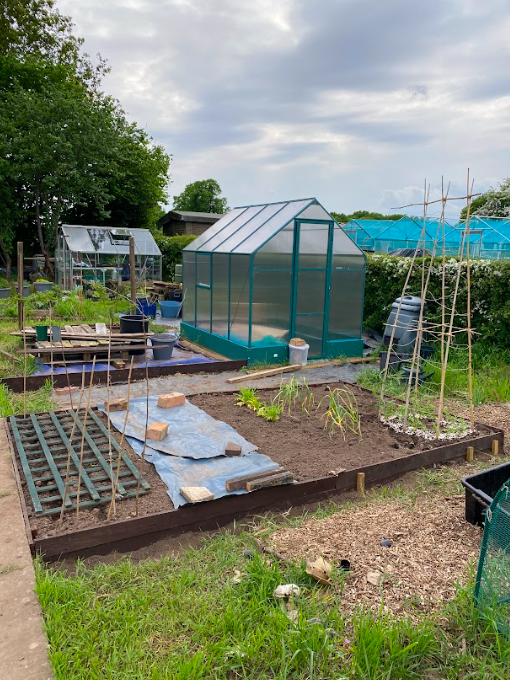
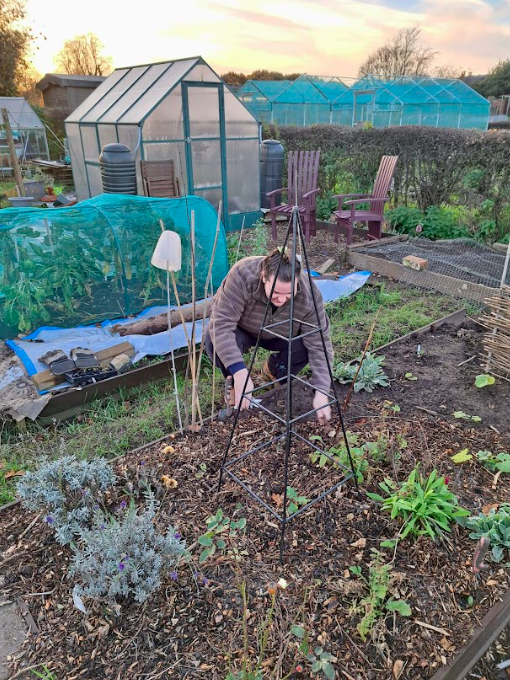
Layout and planting
So this is a bird’s eye view of how the plot looked this year. The yellow highlighted areas are the in-progress areas.
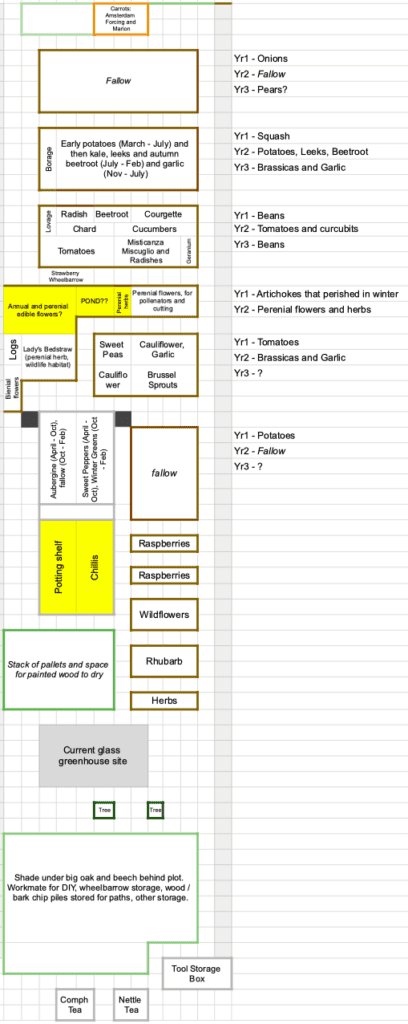
The top of the map is the front of the plot fenced with hawthorn hedging (which also runs the full length of the left-hand side too). I have half a full plot so a shared paved path runs down the right-hand side as a boundary to my neighbour’s half.
My first big bed at the top – I left fallow and covered this year. Until about June time I allowed Spanish Black Winter Radishes to run to seed in this bed. They worked as an overwinter cover crop and then provided shelter for insects while I dug up other areas through spring. I have grand plans for planting pears here but that’s next winter’s shenanigans.
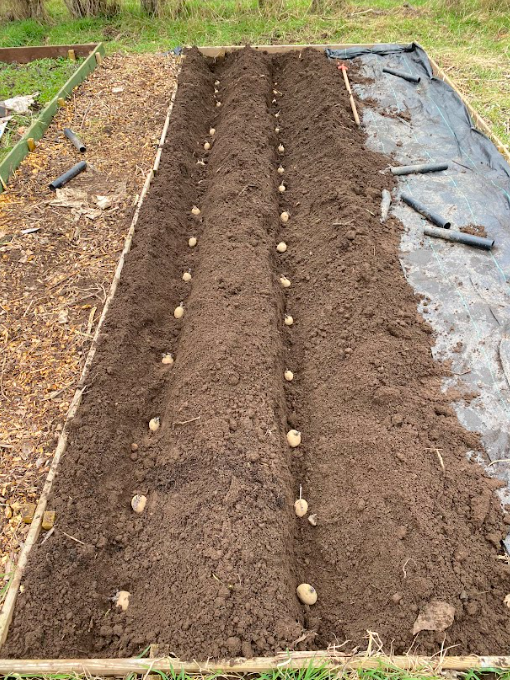
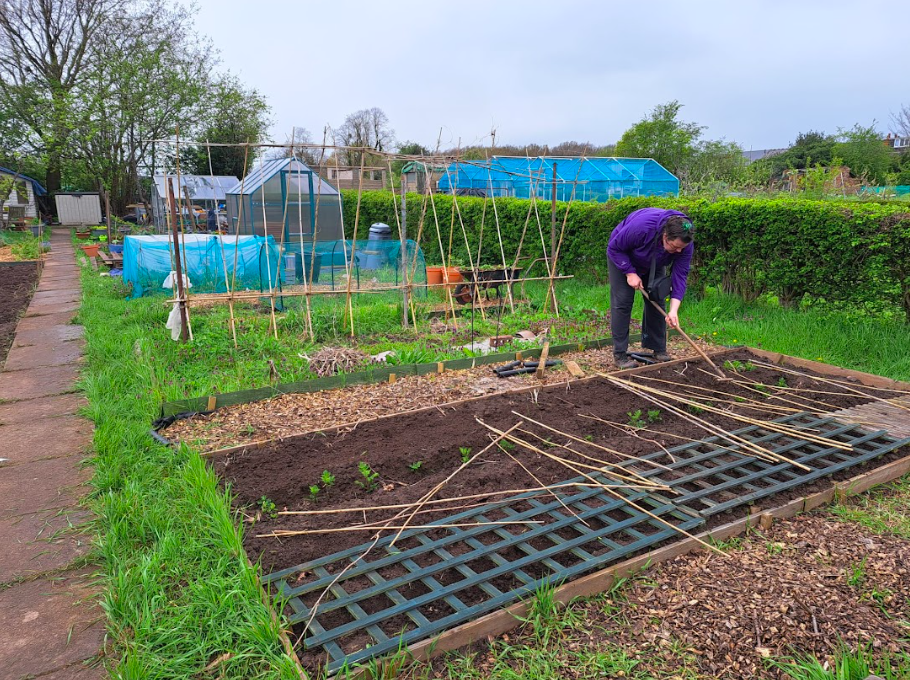
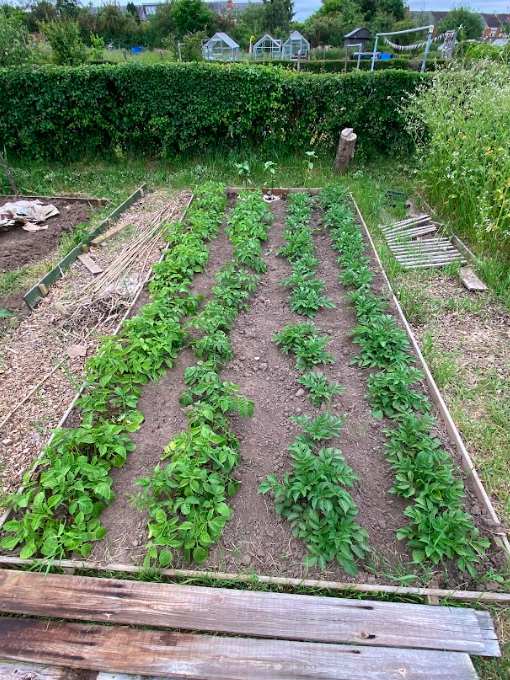
The second bed was home to my potatoes. I only grew earlies this year, Rocket potatoes as first-earlies and Charlotte potatoes as second-earlies. My plan was to grow these and harvest by June / July then plant winter leeks but that ended up changing, largely because they were slow to mature with the weather. This bed then became home to baby leeks (the leeks I originally intended to plant out earlier than I managed), beetroot and non-true Cavolo Nero (seed was collected and given to me by another grower). Over winter the kale remains alongside garlic which has started to show life.
The third bed is where I grew my beans last year with a frame built onto big scaffolding poles I drove deep into the ground for stability on an exposed site. This year it was home to cucumbers, tomatoes, courgette, a volunteer winter squash, salad roots and leaves. All of my outdoor tomatoes eventually succumbed to blight, but some varieties like Red Pear noticeably held out a lot longer than others.
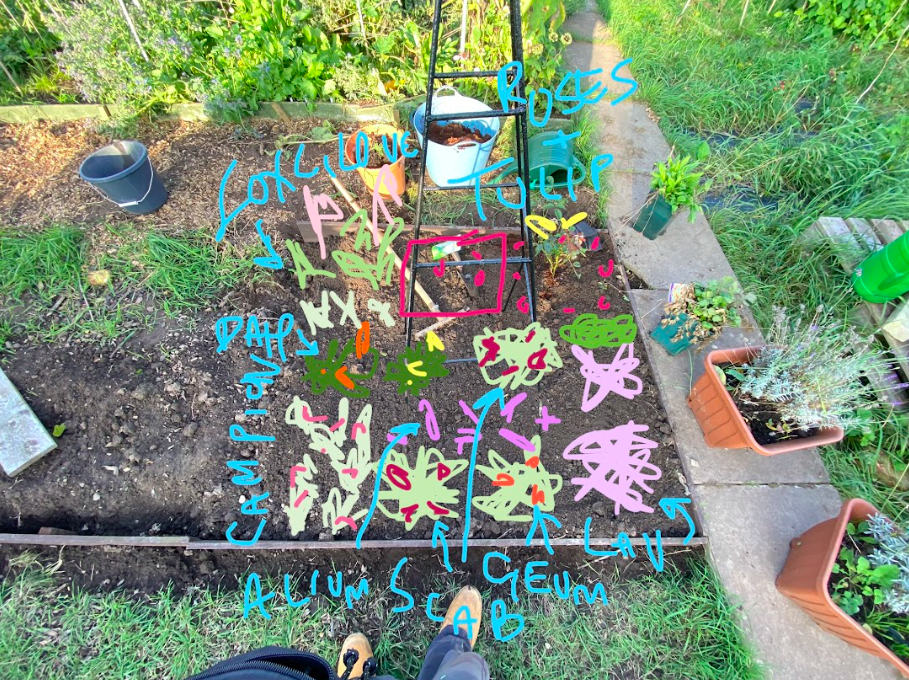
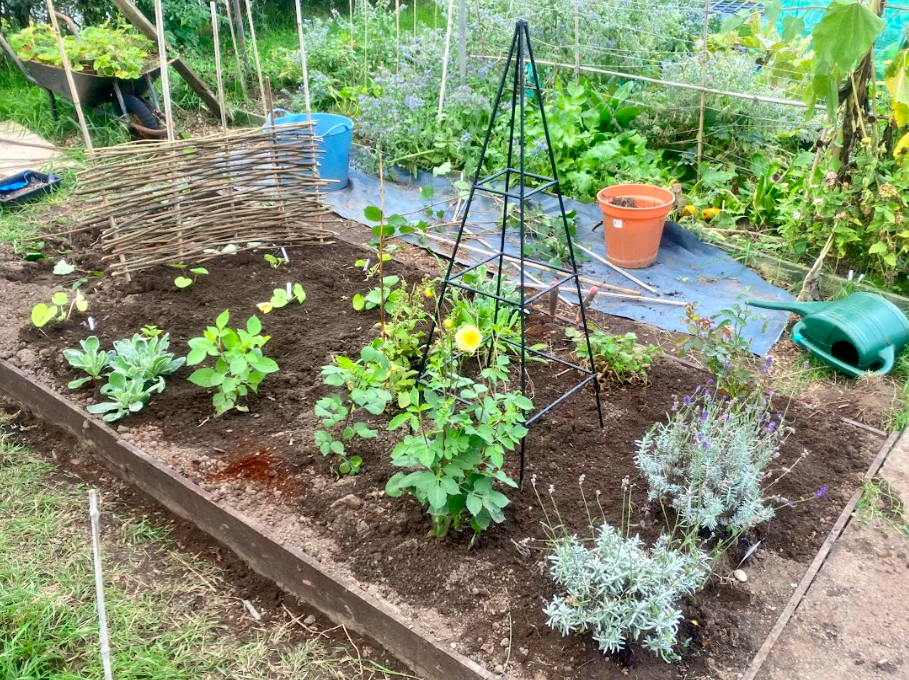
The next bed is an L-shaped bed I’ve constructed over the second half of the year. It’s in the same position as where I grew artichokes last year. I concentrated on building the two ends where I knew I wanted to plant mature plants and seeds before spring. The last section in yellow remains to be dug over and sides to be added which I’ll do Feb-March 2024. I’m still debating where and how to construct a pond, the middle of this bed (away from the hedge and big trees with leaf fall) will be ideal if I can provide some shade.
Tucked into the L-bed is the smaller 2x3m bed (the other beds are 2×4.5m ish, with hedge to path being 6m wide). It was a perfect size for me to experiment with growing cauliflower and brussel sprouts under netting. DePurple cauliflowers did by far the best for me, producing large beautiful heads, so I’ll definitely grow them going forwards. All six of my Brendan brussel sprout plants worked great too and I’m still cropping them.
Next is my polycarbonate greenhouse outlined in grey to the left, and a covered section of fallow ground on the right. The fallow ground was my potato bed last year. In yellow is where I want to move my glass greenhouse to which I’ll do March-April 2024 time. The sun moves from the top right corner of the map to the bottom left so the positioning of the two greenhouse will be ideal with long hours of sun.
After that there are small beds of raspberries, rhubarb, flowers and herbs. In time I’ll likely reposition these but they’re fine for now. At the back of the plot (the bottom edge) sits a massive oak tree with hazel, beech and holly either side. These create a lot of shade on this bottom third. In the height of summer the area outlined in green at the bottom of the map is great for resting out of the sun, but in winter the shade covers the bottom third to two fifths for a good chunk of the afternoon.
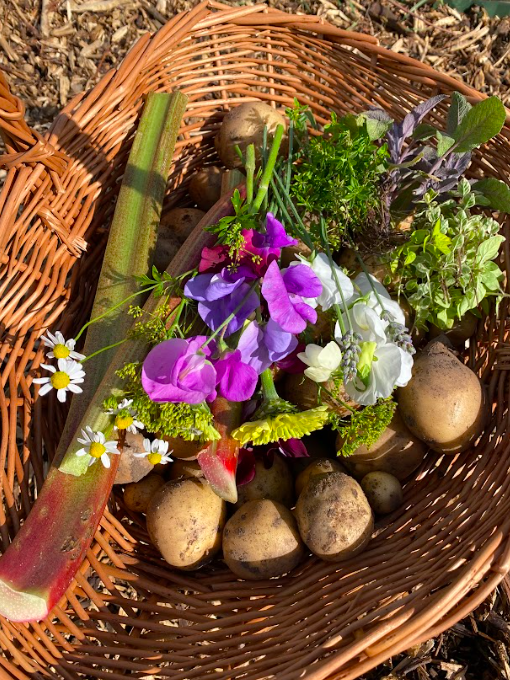
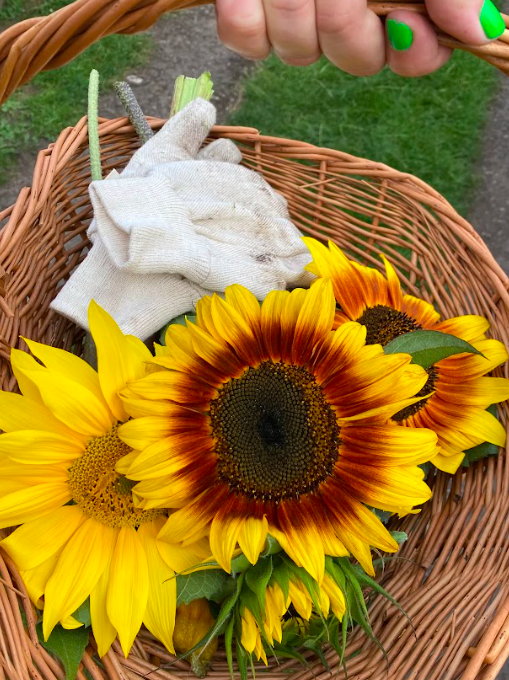
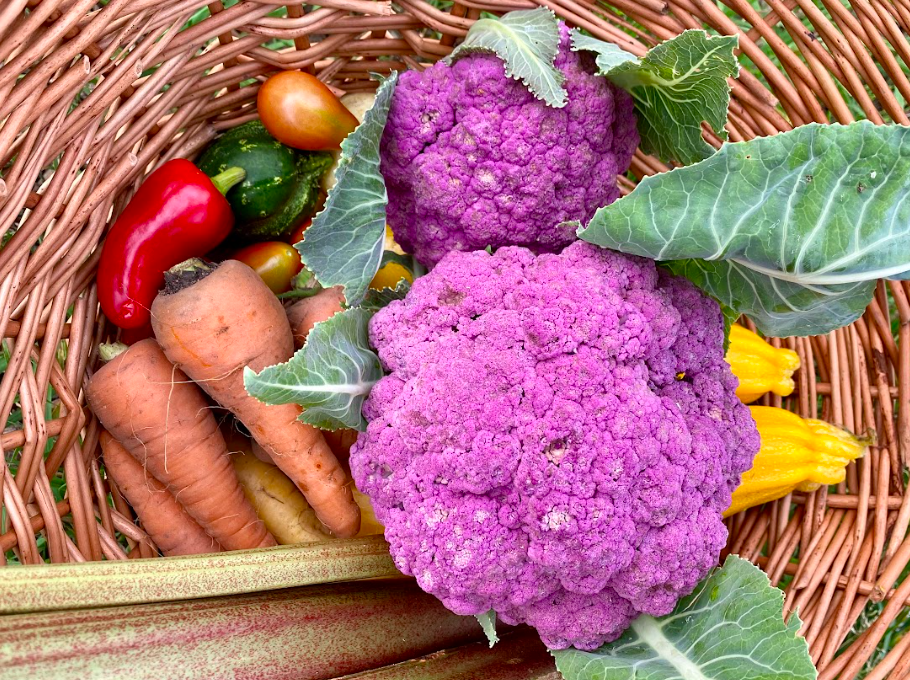
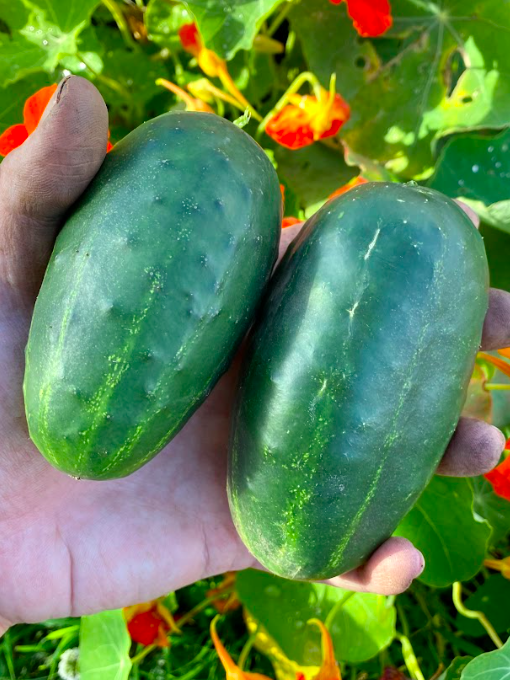
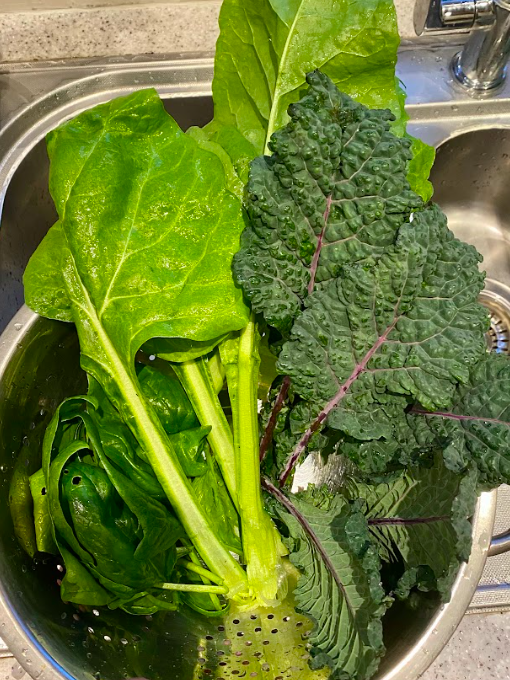
Healthy plot
This year has seen the biggest improvement in my mental health since the onset of this depressive episode. Spring was really hard going for me (seasonal depression lingering, bereavement, and the rest) but after keep on keeping on, giving myself permission to only do what I can, setting regular short-term goals and praising myself for each task I achieved I got through it. Summer allowed me to be the most active I’ve been through this bout of illness. Even with the onset of this current winter I was hit with slow brain and decreased activity but not significantly low mood like other years. I feel very lucky and proud of myself for the independence and health progress I’ve made this year.
The allotment has played a huge roll in my recovery. It gives me independence when I otherwise still rely on the care of family. It allows me to structure positive goals for myself which can flex depending on my level of executive dysfunction. It allows me a tangible manifestation of my hard work. It provides me opportunity to spend long hours outside in nature when living in the middle of a city.
I saw an old colleague and friend the first autumn I had the plot and I was explaining the benefits it gave me. She said the plot is like my brain. When I took it over the soil was depleted from being severely overworked by previous tenants, it had overgrown brambles and random junk piled up, a big area at the back was a slimy bog from a huge failed compost heap – all in all a similar mess to how poorly my brain was. She said that in this way the plot was a metaphor for my brain. I started with a mess. I had to sort through, make sense of it all, remove unnecessary rubbish. Feed and nurture the ground to restore it. And in time build anew.
I’ve seen a big improvement in soil health with added loam and inoculation. I’ve used a combo of compost and chop-n-drop methods to added organic material to the soil structure. I’ve also got two big tubs of fermented weeds which act as free liquid plant feed whilst also being a factory for healthy bacteria (from leaf litter). Both last autumn and this autumn I’ve spotted mushrooms here and there which shows mycellium networks are rebuilding after my initial digging. I’m lucky to have lots of earth worms and other life that keeps the soil happy too.
I’ve also consistently provided space for wildlife throughout developing the plot. In the permanent bed layout I’m creating lots of spaces for year round habitats. Lady’s Bedstraw is a herb traditionally used to set Red Leicester cheese and in medieval times make mattresses – but more useful to me is it being a prime perennial plant to provide year round habitat for moths, butterflies and more. Hidcote lavender is loved by hoverflies whose lavae devour problem pests like aphids. Log and stick piles provide homes for precious beetles who are again great at keeping pests like slugs and aphids in balance. I’ve seen more spider species than ever before in my life. Flowers are pretty and often act as herbs or cut flowers when needed, but also provide seed heads to feed birds. The frogs like hanging around my plot even without a pond installed. And I had a robin nest in a box I placed in a copse of hazel, it continues to follow me from place to place hoping for worms.
With all this life visible it shows how much healthier the plot is since it’s been in my care. It’s a joy to see and means a lot to me.
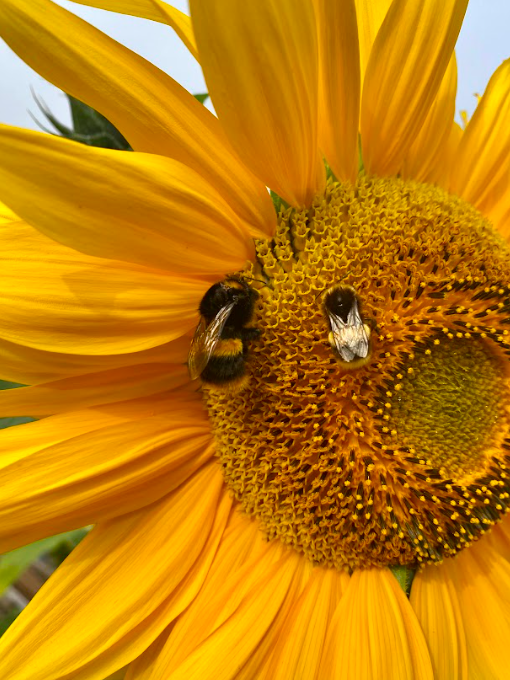
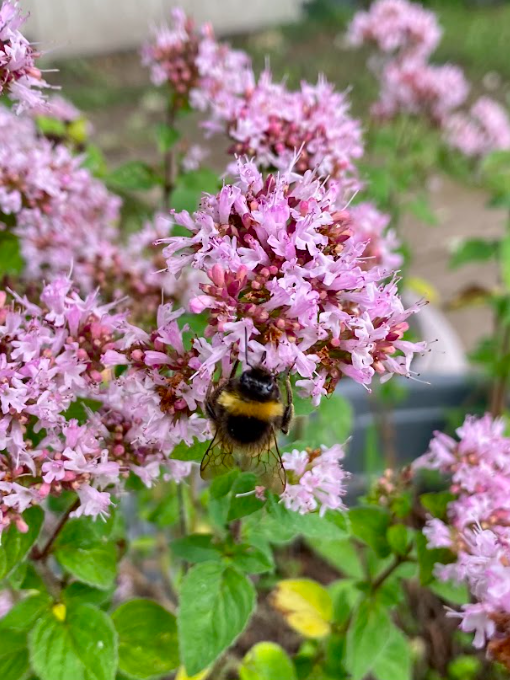
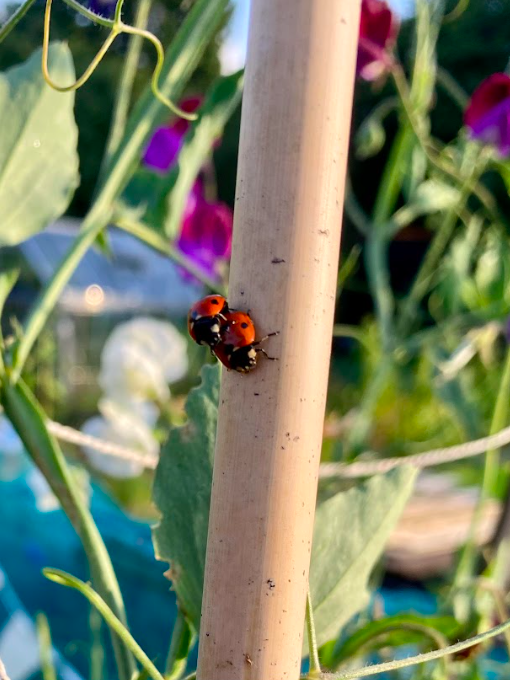
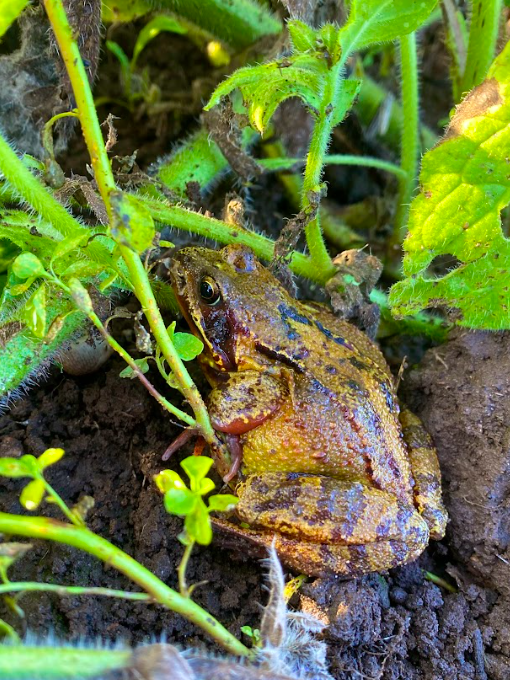
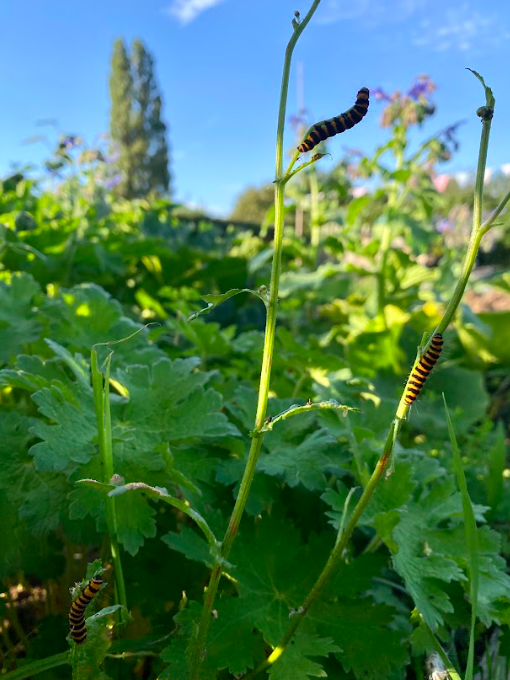
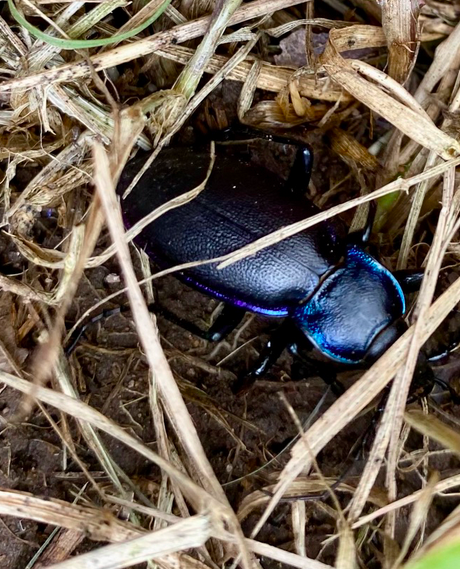
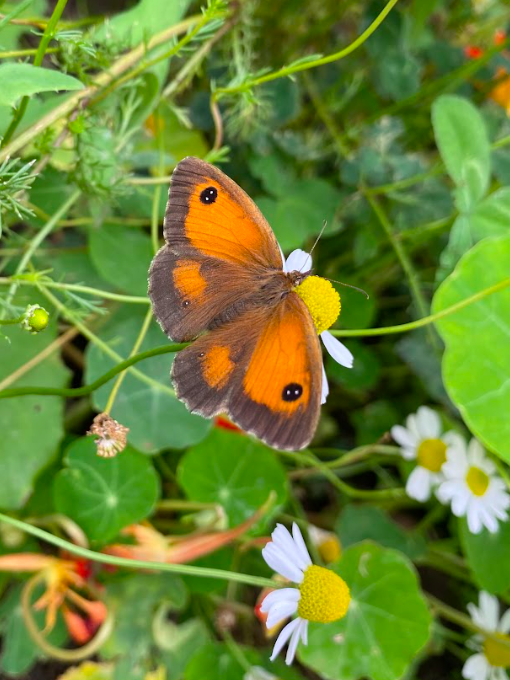
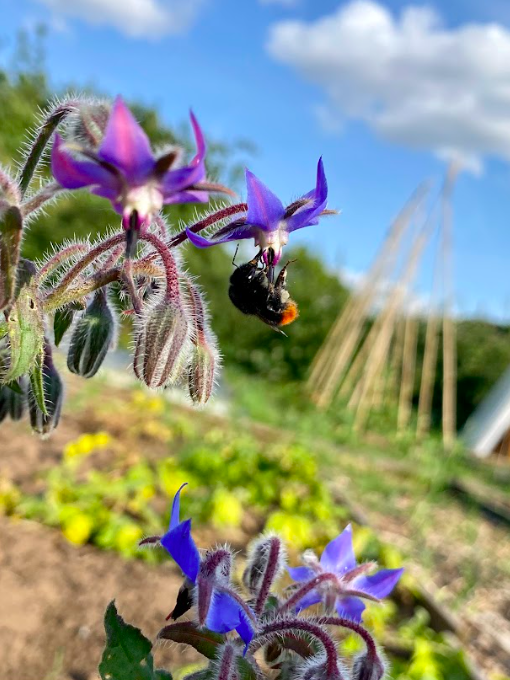
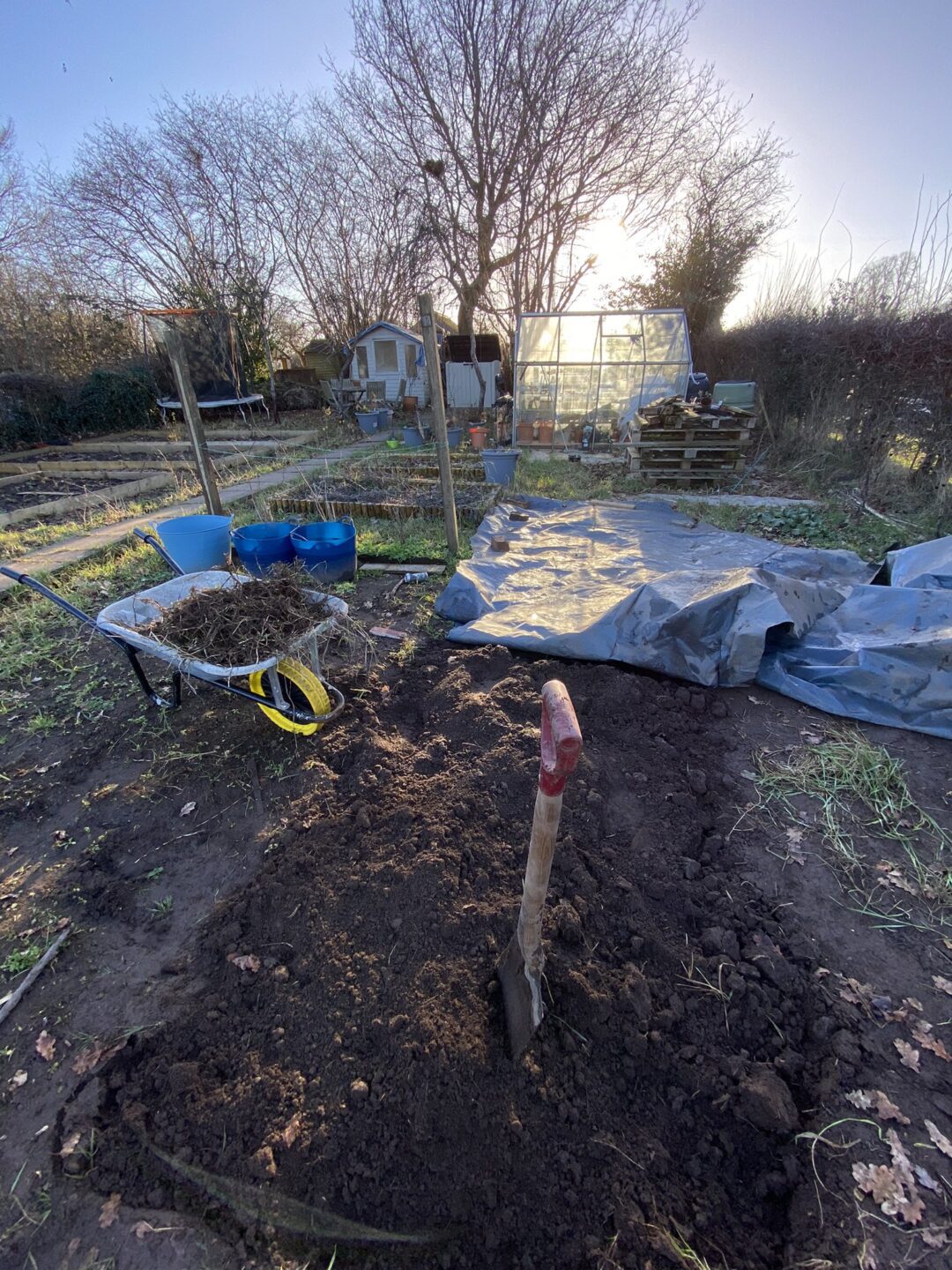
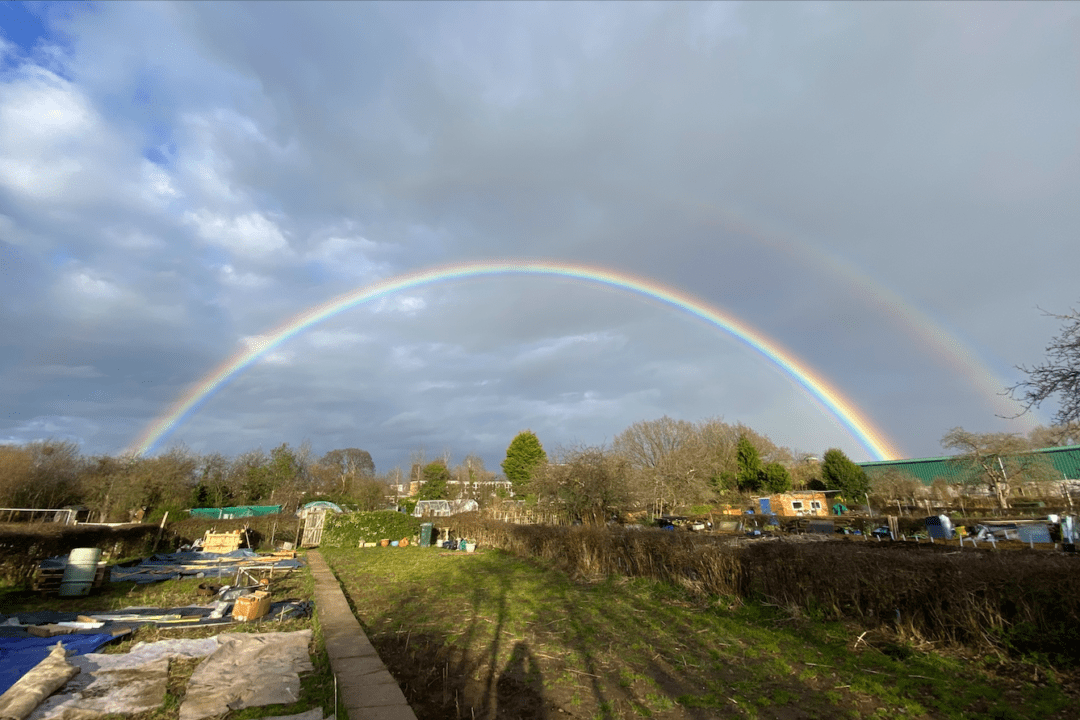


6 Comments
A detailed and impressive post, which I have to say is more interesting and helpful than some article in published gardening magazines, thank you. The images are also quite beautiful.
Thanks David 🙂
A most enjoyable and interesting post with lovely pictures, charting your progress through the year.
Let’s hope that we all have a good year on our allotments. xx
Thanks Mike, wishing you a healthy and prosperous 2024!
Lovely read Lauren. Great to see how well the allotment is coming along and by extension your overall health; a testament to the hard work you’ve put in. Especially love seeing all the life that’s flourishing there, complete with some Ladybird love! 😆
Wishing you a plentiful harvest this year!
Thanks Alex 🧡 I’m looking forward to doing less DIY and more growing this year. Got some funky seeds to try out!